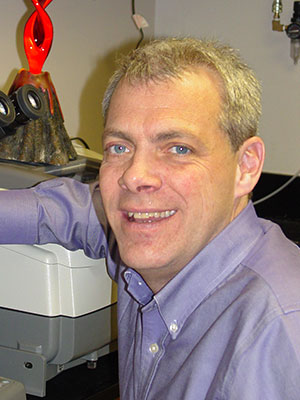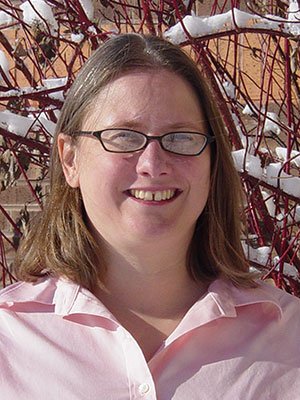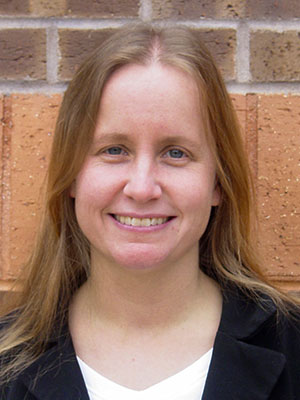Members of the Hard Rock Group study structural geology, mineralogy, petrology, volcanology, and tectonics. Tectonic processes and volcanoes significantly impact Earth and its human inhabitants. Our research group strives to conduct research that contributes to knowledge of basic Earth and planetary processes, mitigating natural hazards, developing Earth resources, discovering human origins, and understanding paleoclimate.
Dr. Barry Cameron, Associate Professor
 Barry Cameron
Barry Cameron
Specializes in Igneous Petrology and Volcanology
Research: My main fields of research are igneous petrology, volcanology, and terroir. At the moment, I am focused on four main broad research projects: the origin of arc magmas, the explosive behavior of silicic lava domes, the formation of subglacial volcanoes, and the unique terroir of volcanic soils.
- The Origin of Arc Magmas: Subduction environments host the most explosive volcanoes on Earth. One of the most enticing places to study these explosive volcanoes is in Arc Magmas Central America. I have concentrated on the country of Guatemala to study arc magmas.
- The Explosive Behavior of Lava Domes: Lava domes can experience explosive decompression eruptions that form dangerous pyroclastic flows when their high-pressure flow interiors are exposed. For many years, volcanologists targeted zones of high water content on lava domes. While a post doc at Arizona State University with Jonathan Fink, we wondered whether these high water contents were truly magmatic in origin or whether they contained significant secondary water.
- The Formation of Subglacial Volcanoes: Our research group has been intrigued by the tempestuous relationship between volcanoes and glaciers. The climate and glacial community have become greatly interested in our ability to estimate ice thicknesses from the measured volatile content of subglacial glasses.
- Terroir: Terroir defies easy definition. One simplified answer, but appealing to geologists, is that it’s all about the soils. But it is obviously more than that. Terroir must reflect the complex interplay of a plethora of variables: bedrock geology, soils, climate (temperature and precipitation), slope, orientation, and all the human factors related to viticultural practices. The terroir research group at UWM has undertaken preliminary studies in Wisconsin, Nova Scotia, as well as Sicily and the Marche region in Italy.
Dr. Dyanna Czeck, Associate Professor
 Dyanna Czeck
Dyanna Czeck
Specializes in Structural Geology and Tectonics
Research: My research is in the area of structural geology focused on studying strain, deformation fabric formation, and rheology in naturally deformed rocks. I primarily study shear zones, tectonites including deformed conglomerates, and granite emplacement fabrics at a variety of scales. Most of my work combines field studies with other techniques like petrographic studies, electron backscatter diffraction (EBSD, to measure crystallographic orientations in rocks), FTIR (to measure water content in deformed rocks), mathematical modeling, or magnetic fabric studies. Students are collaborators on most of my research projects.
- Rheology and Conglomerates, Tillites, and Fragmental Rocks: Due to natural variations in the response to strain, heterogeneous deformed rocks such as conglomerates provide natural laboratories to observe the effect of rheology on deformation. By exploiting the natural contrasts and our ability to measure strain within the conglomerates, we address the processes of deformation partitioning within heterogeneous rocks. I have worked on several collaborative projects that look at rheology in deformed conglomerates (and similar rocks).
- Syntectonic Intrusions: Relationships between intrusions and deformation can be complex and interesting! I am working on a collaborative project studying small syntectonic intrusions in the Superior Province (Rainy Lake region of Ontario/ Minnesota border) and the Cap de Creus region in northeastern Spain. We are looking at the complex field geometries formed with multiple intrusions during a prolonged deformation event. I also work on deformation in large plutonic bodies associated with orogenesis.
- Anastomosing Shear Zone Geometries: Shear zones in nature often have anastomosing (braided) geometries, and these geometries have been called upon to explain strain localization, mechanical abilities to continue deformation, and segregated fluid flow in the crust. However, the processes of development and geometries of the anastomosing strands have yet to be understood. I am working on a project to study the geometries of small shear zones associated with the Mountain Shear Zone in northeastern Wisconsin. In a related project, we are studying anastomosing geometries of shear zones that occur in rigid gabbroic bodies within a broader deformation zone in the Rainy Lake region of Ontario.
- Strain modeling: I have always been interested in relating deformation features of rocks in the field to predictions from strain modeling. Currently, we are modelling transpression and link the modeling to field structures in the South Iberian Shear Zone (Spain) and the Rainy Lake region (Canada).
Dr. Lindsay McHenry, Associate Professor
 Lindsay McHenry
Lindsay McHenry
Specializes in Mineralogy, Volcanic Stratigraphy, and Geoarchaeology
Research:
Tephrostratigraphy of Tanzanian Archaeological Sites: I use the composition of volcanic ash to correlate between archaeological sites in East Africa. Individual volcanic eruptions produce and deposit volcanic ash layers of distinct compositions that can often be uniquely identified over broad areas. Unfortunately, the volcanic ash layers are poorly preserved because of the saline-alkaline lake and groundwater conditions at the time of (and since) deposition. I have instead focused on the phenocrysts (volcanic minerals) for characterization and correlation.
Using phenocryst composition, I have uniquely identified and correlated the major Bed I volcanic ashes throughout the basin, creating a high-resolution stratigraphic framework for Bed I. I am currently working to expand both the regional and temporal scope of this project. My goal is to establish a regional stratigraphic framework based on volcanic ash compositions for Plio-Pleistocene (and Holocene) Tanzania that can be used for regional correlation between sites of paleoanthropological, palaeoclimatological, and palaeoecological interest.
Mars Analogue Research: I am also interested in Mars geology, and finding terrestrial analogues for the minerals, sediments, and geochemistry of the Martian surface. Much of the Martian surface likely consists of altered volcanic material. These deposits are also enriched in sulfate minerals. I am interested in studying places on Earth where sulfate minerals are formed during the alteration of volcanic materials, under both volcanic and aqueous conditions. I have started a new project examining the precipitation of sulfate minerals in basaltic caves at Craters of the Moon National Monument in Idaho. Craters of the Moon basalts are particularly high in iron, and are thus more similar to Mars basalt compositions than are other commonly used analogues.
Any interested MS or PhD students should feel free to contact any of the faculty members above.